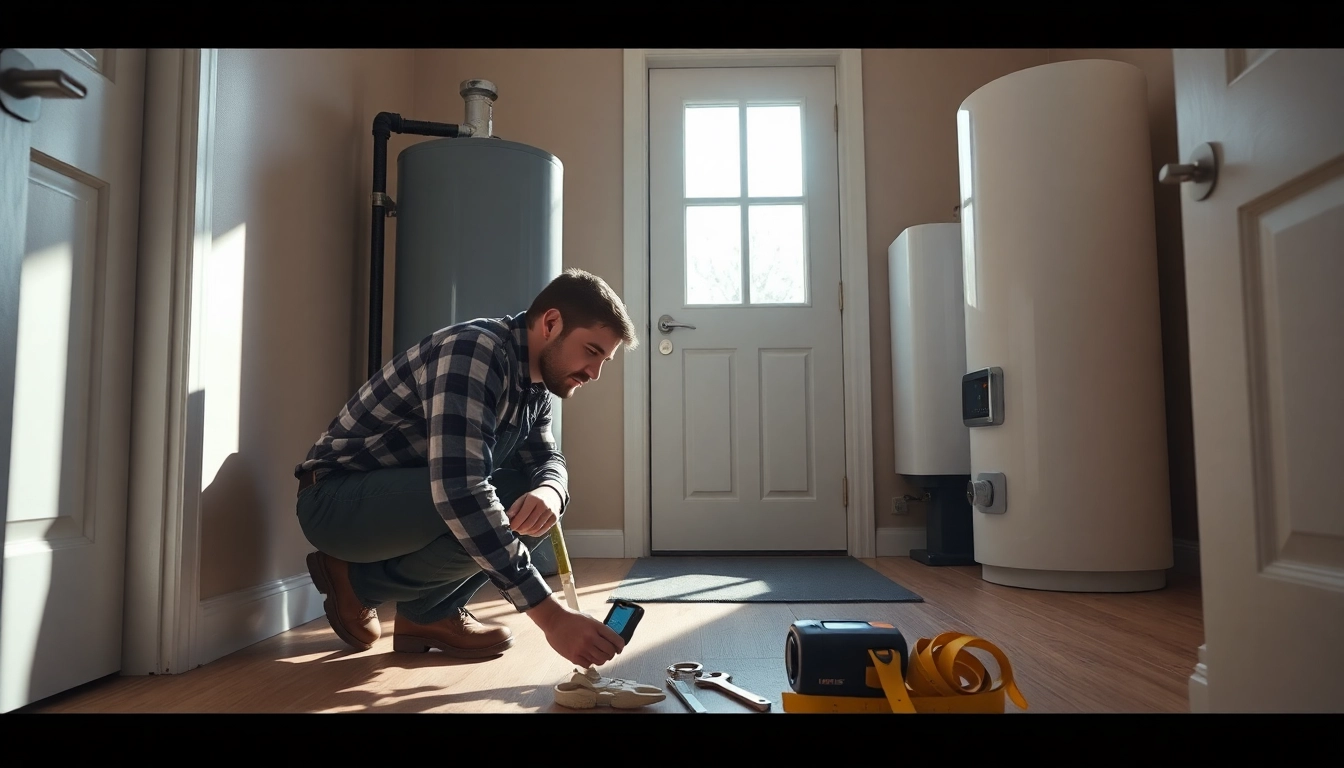Understanding Plumbing Leak Detection Techniques
What is Plumbing Leak Detection?
Plumbing leak detection is a critical service used to identify leaks in plumbing systems, which can lead to costly damage if left unaddressed. It encompasses various techniques and technologies used to pinpoint the source of leaks, often hidden behind walls or underground. Effective leak detection is essential for the longevity of plumbing systems and protecting property from water damage.
Common Methods of Leak Detection
There are several methods employed in plumbing leak detection, each with its unique advantages and applications. These methods include:
- Acoustic Detection: Uses sound waves to locate leaks by listening for the sound of water escaping from a pipe.
- Thermal Imaging: Utilizes infrared cameras to identify temperature differences associated with leaks, especially in pressurized hot water systems.
- Moisture Meters: Measures moisture levels in building materials to detect hidden leaks behind walls or in ceilings.
- Video Inspection: Involves sending a camera down the pipes to visually locate the source of the leak.
- Dye Testing: Involves adding a dye to water to trace leaks visually, typically used for pools or wastewater systems.
Signs of a Hidden Leak
Identifying hidden leaks early can save homeowners from significant damage. Watch for the following signs:
- Increased water bills without a change in usage.
- Water stains or discoloration on walls, ceilings, or floors.
- Musty odors indicating mold growth or excess moisture.
- Sound of running water when no taps are on.
- Reduced water pressure in faucets or fixtures.
Essential Tools for Effective Plumbing Leak Detection
Modern Leak Detection Equipment
Effective plumbing leak detection often relies on advanced equipment designed to locate leaks with high precision. Some modern tools include:
- Acoustic Leak Detectors: These devices amplify the sound of leaks, allowing technicians to pinpoint their location accurately.
- Thermal Imaging Cameras: These cameras detect heat variations caused by leaking hot water, making them ideal for hidden leaks.
- Moisture Meters: Used to measure the moisture content of materials, helping to identify damp spots indicative of leaks.
- Video Pipe Inspection Cameras: These cameras provide real-time visuals of the inside of pipes, allowing for accurate leak location and assessment.
- Leak Detection Dyes: Non-toxic dyes that can be introduced into the plumbing system to help visualize the path of leaks.
DIY Tools for Homeowners
For homeowners looking to address minor leaks, several DIY tools can be effective:
- Water Leak Sensors: Supplemental devices that alert homeowners via smartphone when moisture is detected.
- Moisture Meters: Often available for consumer purchase, they can help identify areas of concern in homes.
- Dye Test Kits: Simple kits available for testing swimming pools or plumbing systems for leaks.
Choosing the Right Tool for Your Needs
Selecting the appropriate tool or method for plumbing leak detection depends on the situation, including the accessibility of pipes, the severity of the leak, and your technical comfort level. For minor leaks, a homeowner might effectively use moisture meters and water leak sensors; however, for more complex situations, hiring a professional equipped with advanced technology may be necessary.
Professional vs. DIY Plumbing Leak Detection
When to Hire a Professional?
While many homeowners may successfully identify and patch small leaks, it’s often advisable to call a professional for:
- Leaks in inaccessible or hard-to-reach areas.
- Severe water damage that may affect structural integrity.
- Complex plumbing systems such as those involving subfloors or underground piping.
- Persistent leaks despite previous DIY efforts.
Cost Considerations for Professional Services
The costs associated with professional plumbing leak detection can vary widely based on several factors, including:
- Type of detection method used.
- Extent of the leak and damage.
- Geographic location and labor rates.
- Condition of the existing plumbing system.
While it may seem costly upfront, professional leak detection can save money in the long run by preventing significant property damage.
DIY Techniques for Homeowners
For those who choose a DIY approach, several techniques can help locate leaks effectively:
- Check Your Water Meter: Turn off all taps and note the meter reading. After a few hours, check again. If it moves, a leak is present somewhere.
- Look for Visible Signs: Investigate areas where plumbing is accessible, such as under sinks, around toilets, and near water heaters.
- Conduct Visual Inspections: Look for discoloration, dripping, or wet spots around fixtures.
Preventing Future Plumbing Leaks
Regular Maintenance Tips
Preventing plumbing leaks requires proactive measures. Here are some essential maintenance tips:
- Regularly inspect and test all plumbing fixtures for leaks.
- Flush your water heater to remove sediment buildup.
- Seal pipes and joints with appropriate sealants before winter temperatures intensify.
- Maintain an eye on water pressure and consult a professional if you notice fluctuations.
Behavioral Changes to Mitigate Risk
Moreover, some behavioral changes can significantly reduce plumbing leak risks, such as:
- Avoiding the dumping of grease or food scraps down drains.
- Educating household members about proper plumbing system care.
- Using water-saving fixtures, which often provide alerts if their efficiency decreases due to leaks.
How Upgrades Can Help
Investing in plumbing upgrades can also yield long-term benefits. Consider the following:
- Replacing outdated plumbing systems with modern pipelines made of durable materials.
- Installing smart leak detection systems that notify you in real-time of potential issues.
- Using high-quality fixtures that minimize wear and tear over time.
Evaluating the Effectiveness of Your Plumbing Leak Detection
Monitoring for Potential Leaks
Once leak detection techniques have been applied, ongoing monitoring is crucial. Setting up regular check-ins, using water meters for tracking consumption, and employing detection devices can enhance your ability to identify future leaks.
Performance Metrics for Detection Techniques
Evaluating the effectiveness of your plumbing leak detection methods can help in understanding their efficiency. Key metrics include:
- The speed at which leaks are identified and repaired.
- Reduction in water consumption over time.
- The number of repeat issues within the same plumbing system.
Long-term Solutions for Leak Prevention
Finally, long-term strategies for preventing plumbing leaks include:
- Investing in comprehensive plumbing maintenance plans.
- Educating everyone in the household regarding proper plumbing care.
- Utilizing technology such as smart home water monitoring systems to maintain vigilance over water usage and leak detection.
Ultimately, by understanding the various aspects of Plumbing Leak Detection, from the tools used to methods applied, homeowners can effectively address and prevent leaks, ensuring the integrity of their plumbing systems.



